Archaeological, anthropological and ethnographic history offers rich evidence of Ngadjuri culture all through this region. Many rock surfaces are alive with Aboriginal carvings and paintings of great antiquity. Stone tools, message stones, spear points, fire hearths, rock shelters, scar trees, and grave sites all tell their own stories of Ngadjuri people and their ongoing connection to this land.
Ngadjuri found it increasingly difficult to hold onto their land. The new settlers took over many water and food sources. They also brought in new diseases, to which Ngadjuri had no immunity. Violence broke out at times. Many Ngadjuri people died, with estimates that only about 10 percent of the population survived those first few decades of contact.
Many survivors were forced onto missions across South Australia, including the Poonindie Mission on Eyre Peninsula, Point Pearce Mission on Yorke Peninsula, and Point McLeay Mission in the Coorong area. Other Ngadjuri people joined neighbouring Aboriginal groups living north, east, and west along the Murray River.
Many Ngadjuri people are involved in protecting their rich heritage, and revitalising their living cultural landscape for all to enjoy and learn from. The names of many towns and areas in the Mid North offer hints about Ngadjuri knowledge, like these words to describe parts of the landscape.
For Example: Booborowie, round waterhole; Bundaleer, among the hills; Caltowie, waterhole of the sleepy lizard; Canowie, rock waterhole; Coomooroo, small food seeds; Eudunda, sheltered water (originally Eudunda Cowie, from the word judandakawi); Kapunda, water jump out; Tarcowie, flood water or place of washaway water; Terowie, hidden waterhole; Yacka, sister to the big river; and Yarcowie, wide water.
This information has been sourced from the book Ngadjuri – Aboriginal People of the Mid North Region of South Australia, written in 2005 consultation with the Ngadjuri Walpa Juri Lands and Heritage Association. Other sections have been written more recently in consultation with Ngadjuri people who have been working with the Clare and Gilbert Valley Council on cultural revival projects.
Further information; please contact the Ngadjuri Nation Aboriginal Corporation; Ngadjuri Walpa Juri Lands & Heritage Association; or the Clare & Gilbert Valleys Council.

